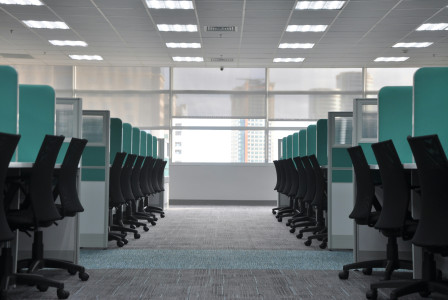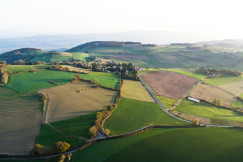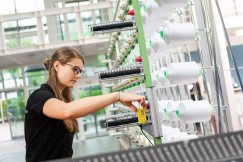Best practices
14 July 2025
Closing the loop in the carpet industry: Ege Carpets initiatives
Best practices
14 July 2025
R&I, techniques and technological solutions
Sustainable competitiveness
Construction
+7 more
Login / create an account to be able to react
-
85

Ege Carpets, a large Danish carpet manufacturer, has embedded sustainability into its business model by combining two levers of circular transformation: regenerated raw materials usage in the product design phase and implementation of a take-back system for end-of-life carpets
Ege Carpets
Topics
Albania
Armenia
Austria
Belgium
Bosnia and Herzegovina
Bulgaria
Croatia
Cyprus
Czechia
Denmark
Estonia
EU-27
Finland
France
Georgia
Germany
Greece
Hungary
Iceland
Ireland
Italy
Kosovo
Latvia
Liechtenstein
Lithuania
Luxembourg
Malta
Moldova
Montenegro
Netherlands
North Macedonia
Norway
Poland
Portugal
Romania
Serbia
Slovakia
Slovenia
Spain
Sweden
Switzerland
Türkiye
Ukraine
Other
Academic / Research and VET Institutions
Business Support Organisation
Company with 250 or more employees
Cluster Organisations
Consumer Organisations
Cultural and Heritage Organisations
Destination Management & Marketing Organisations
EU Institutions
Financial Institutions and Investors
Industry Associations and Chambers of Commerce
International Organisations
Local Authorities
Media / Journalist Organisations
National authorities
Networks and Federations / Confederations
NGOs / Non-profits
Notified Bodies
Regional Authorities
SMEs (a company with less than 250 employees)
Social Economy Entity
Trade Unions
Other
-
Transition Pathway's building blocks
-
-
R&I, techniques and technological solutions
-
Sustainable competitiveness
-
-
Industrial ecosystems
-
-
Construction
-
Textile
-
-
Textiles ecosystem areas
-
-
Fibres, yarns and fabrics
-
Household/interior textiles
-
Technical textiles
-
Research and Innovation
-
Technology and Machinery
-
Waste management, reuse and repair
-
Share
Industrial-scale use of regenerated nylon yarn
Ege Carpets is a company headquartered in Denmark with several subsidiaries across Europe, Asia and the United States. The company produces approximately 5.8 million m² of carpet annually (data covering the period 1st May 2023 to 30th April 2024), including both tufted and woven products from its four production units in Denmark, as well as wool yarn produced in Lithuania. Ege Carpets primarily targets the contract market, focusing on the Hospitality (hotels, resorts), Offices, and Marine (cruise ships, vessels) segments.
Ege Carpets has progressively taken steps to transition from virgin materials to regenerated ones. As of 2024, more than half (58%) of carpets sold by the company were made from regenerated nylon yarn sourced from post-consumer and industrial waste, including discarded fishing nets, old carpets, and other residues, which are regenerated through chemical de-polymerisation. This nylon material can then be further recycled, provided it can be separated from the other materials.
With this approach, Ege Carpets aims to integrate sustainability considerations from the outset, supporting recyclability and minimising environmental impact over the product's lifespan.
Take-Back system
The second pillar of Ege Carpets' circularity strategy is CircleBack, a take-back and recycling system launched in 2023. By 2024, it covers ten major wall-to-wall carpet collections, with plans for further expansion. The take-back scheme applies to post-2023 carpet collections, which are specifically engineered to facilitate the easy separation of materials for recycling. To enable this, Ege Carpets has modified the design and material composition of its best-selling carpets. The material recovery rate of CircleBack is high, with up to 98–100% of the carpet's components being recyclable.
The system allows customers across Europe to return used carpets from selected collections for dismantling and recycling. At the point of purchase, customers are informed whether their carpet qualifies for CircleBack. When the carpet reaches the end of its life, customers can contact Ege Carpets or its logistics partners to arrange pickup and transport to recycling facilities. Once at the facility, the carpets are dismantled and shredded into separate material fractions. Nylon fibres are sent to Aquafil, Ege's long-term partner, where they are reprocessed into regenerated yarn through their Born Regenerated to be Regenerable (Born R2R) system. Finally, other components, such as adhesive fillers, are reused by Ege in its production lines.
This closed-loop system is managed through partnerships with other actors in the ecosystem and adapted infrastructure, allowing Ege to address the commonly cited barrier of collection inefficiencies in circular models.
Conclusion
The building industry is responsible for 40% of global CO₂ emissions, and interior elements like flooring playing a significant role in this environmental impact. By aligning material innovation upstream with take-back systems downstream, Ege Carpets presents an approach that is in line with the EU’s sustainability objectives. These initiatives, both technically and commercially viable, represent a systemic approach to product circularity across the full lifecycle of carpets. This marks a step forward in transforming the EU sector, where less than 5% of carpets are currently recycled.
Comments (0)
See also
Welcome to the 'Certification and Communication’ Community workspace
- Categories
- Infrastructure Investments and funding R&I, techniques and technological solutions +26 more
Welcome to the Skills and Talent Community Workspace!
- Categories
- Infrastructure Investments and funding R&I, techniques and technological solutions +28 more
Welcome to the Digital Business Community Workspace!
- Categories
- Investments and funding R&I, techniques and technological solutions Skills +26 more




